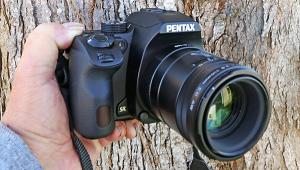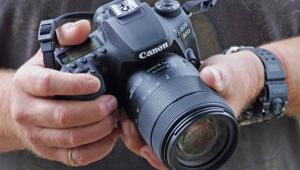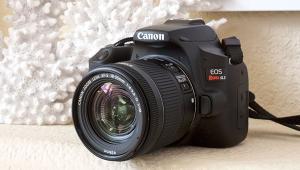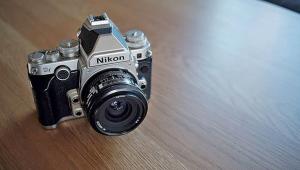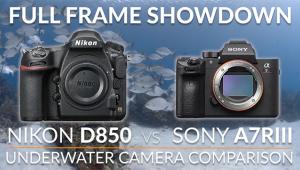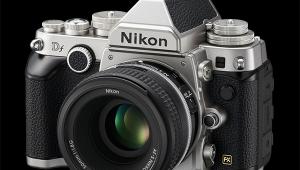Panasonic’s Lumix DMC-L10; A Versatile 10-Megapixel D-SLR With Live View
The second D-SLR from Panasonic, this 10-megapixel model is quite different than the original 7-megapixel Lumix DMC-L1. The latter--built like a tank, and still available--is an unusually traditional model in many respects. It resembles a large/heavy 35mm rangefinder camera and features "retro"-style controls, including a mechanical aperture ring on the wide-aperture Leica D 14-50mm f/2.8-3.5 zoom that's part of the DMC-L1 kit. By contrast, the DMC-L10--with its more compact lens--is far more portable and sports the more common types of controls found on the Lumix DMC-FZ18 digicam. As a bonus, the DMC-L10 includes some very convenient extra features, some originally designed for the Lumix digicams, to increase versatility and ease of use.
 |
Features And Design
Although some consider the DMC-L10 an entry-level model, it's really competing at a higher level. This camera is sold only in a kit with a Leica D 14-50mm f/3.8-5.6 zoom, so it's more expensive than average for the 10-megapixel class. Smaller and lighter than the f/2.8-3.5 lens packaged with the DMC-L1, the new zoom is not as "fast" but also includes the remarkably successful Mega OIS (Optical Image Stabilizer) system. Three Stabilizer modes can be selected in the camera's menu: always on (very useful in Live View), stabilization only after the shutter button is depressed, plus a mode for vertical correction only, intended for panning with a moving subject.
 |
|
 |
|
|
The DMC-L10 retains nearly all of the capabilities of its upscale DMC-L1 sibling, including the menu items, overrides, the very effective ultrasonic sensor cleaner, and the various "Film Modes." These include options such as Smooth, Dynamic, Vibrant, and Nature, great for producing just the right contrast and color for a particular subject. The Live View feature has also been retained, but with some valuable improvements discussed in a moment. Depth of field preview is the only significant amenity that's missing.
 |
|
|
The new camera gained some extra features to satisfy those who are upgrading from a digicam: nine subject-specific Program modes for novices, a few additional menu items, an articulated (not fixed) LCD screen, and some high-tech functions unique to this D-SLR. The most noteworthy are available only in Live View: Digital Zoom, Face Detect Autofocus, and "Intelligent ISO." The latter causes the camera to automatically boost ISO, and hence shutter speed, when subject motion is detected in order to minimize the risk of motion blur.
 |
|
|
Some camera components were jointly developed with Olympus but this Lumix model is quite different than the E-series D-SLRs in many respects. Instead of making comparisons, I'll just discuss the Panasonic entry. The DMC-L10 employs a very "light efficient" Live MOS sensor and the Venus Engine III LSI processor with a new, sophisticated noise reduction circuitry. This combination was intended for low power consumption, a wide dynamic range, excellent color, and clean images at high ISOs. The processor is fast and the buffer (temporary storage bank) is adequately large to allow for shooting numerous JPEGs in a sequence.
Evaluation: The camera body is compact, with a solid feel and a grip that's comfortable for various hand sizes. The Leica D zoom is a bit large/heavy when compared to most kit lenses but overall balance is excellent. The "typical" controls include a FUNC button for quick access to the most commonly needed functions. Only one aspect of basic operation is not intuitive. Exposure compensation must be set using the rear control dial, not marked for that purpose, because there's no dedicated [+/-] button. In other respects, anyone with digicam experience should find operation to be quite familiar, facilitating the transition to a D-SLR.
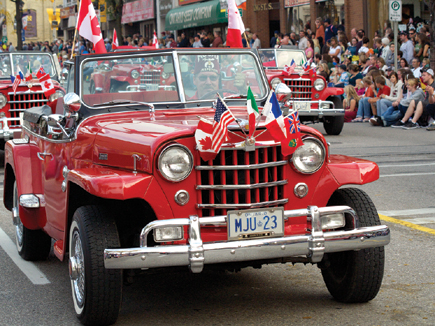 |
|
 |
|
|
- Log in or register to post comments

